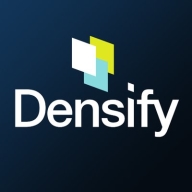

AWS Application Migration Service and Densify are cloud management tools that cater to different needs. AWS Application Migration Service offers a more competitive edge in terms of cost and support, whereas Densify excels with its comprehensive features and optimization capabilities for better resource management and cost control.
Features: AWS Application Migration Service provides seamless integration for cloud migration, offers auto-transformations, and ensures minimal disruption during the migration process. Densify focuses on sophisticated resource optimization, offers predictive analytics, and enhances infrastructure efficiency.
Room for Improvement:AWS Application Migration Service could enhance its optimization features and predictive analytics. It might also benefit from improved customization for specific business services. Densify could simplify its deployment process, reduce its initial costs, and improve its scalability to accommodate a broader range of users.
Ease of Deployment and Customer Service: AWS Application Migration Service provides a straightforward deployment process supported by comprehensive documentation and a large community for troubleshooting. Densify's deployment process is more complex but is balanced by personalized customer service and support for customized implementations.
Pricing and ROI: AWS Application Migration Service offers a cost-effective migration solution with high ROI due to its low-cost structure and minimal fees. Densify, while initially more expensive, provides a high ROI through long-term savings in resource utilization and improved resource allocation.
| Product | Market Share (%) |
|---|---|
| AWS Application Migration Service | 5.2% |
| Densify | 1.6% |
| Other | 93.2% |


| Company Size | Count |
|---|---|
| Small Business | 1 |
| Midsize Enterprise | 2 |
| Large Enterprise | 4 |
| Company Size | Count |
|---|---|
| Small Business | 1 |
| Midsize Enterprise | 1 |
| Large Enterprise | 9 |
AWS Application Migration Service minimizes time-intensive, error-prone manual processes by automating the conversion of your source servers to run natively on AWS. It also simplifies application modernization with built-in and custom optimization options.
Densify is a hybrid cloud and container resource management platform that makes workloads self-aware of their precise resource requirements and automates the resource management and selection process. This solution helps you control your cloud spend and also helps your apps perform and scale better. Densify enables you to match your cloud requirements with the optimal cloud supply. Additionally, Densify is the only technology that leverages patented, predictive machine learning-powered analytics to perform advanced modeling of workload patterns, and provide precise optimization directives. It is ideal for cloud engineers, container platform owners, and IT finance.
Densify works by:
Densify Features
Densify has many valuable key features. Some of the most useful ones include:
Densify Benefits
There are many benefits to implementing Densify. Some of the biggest advantages the solution offers include:
We monitor all Cloud Migration reviews to prevent fraudulent reviews and keep review quality high. We do not post reviews by company employees or direct competitors. We validate each review for authenticity via cross-reference with LinkedIn, and personal follow-up with the reviewer when necessary.